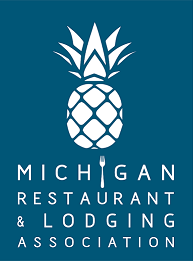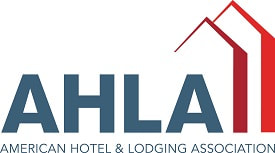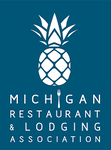Restaurant Revitalization Fund | Resources
The SBA suggests that in preparation for the applications opening, operators should prepare the following:
The American Rescue Plan Act establishes a $28.6 billion "Restaurant Revitalization Fund" (RRF) within the U.S. Small Business Administration (SBA). In partnership with the National Restaurant Association (NRA), the MRLA will provide resources as more information and details become available about the timeline, implementation and launch of the RRF.
- Register for an account on restaurants.sba.gov starting April 30.
- Review the program guide and sample application
- Prepare the required documents, including tax identification numbers and banking information, ownership information, how much you received for first and second-draw PPP loans, and gross receipts. You can read more about acceptable forms of gross receipts here.
- Work with your POS vendor or submit the application directly through the portal when it opens on Monday.
- Attend one of three live application guidance webinars led by the SBA on April 27 at 2:30 pm EST, April 28 at 1 pm EST, or April 28 at 2:30 pm EST
The American Rescue Plan Act establishes a $28.6 billion "Restaurant Revitalization Fund" (RRF) within the U.S. Small Business Administration (SBA). In partnership with the National Restaurant Association (NRA), the MRLA will provide resources as more information and details become available about the timeline, implementation and launch of the RRF.
After Applying: What to Expect Next
- SBA is reviewing and processing priority applications first during the initial 21 days (May 3 to May 24), and then all applications will be reviewed. Applicants under review status should not anticipate any outreach from the SBA during this period.
- To make any corrections following submission and before award funding, applicants must revisit the application portal or call the support hotline to submit the correction, new documentation, and initiate a restart of the timeline for review. If an applicant initiates a restart, it may take 14 days from the time of resubmission for SBA to finalize review. The SBA will not allow corrections to awards that have been paid to awardees.
- If the submitted application is successful, all applications enter “IRS verification.” No action is needed from applicants for this process, which simply allows the SBA to validate information. The process may take up to seven days.
- An additional 4506T form submission is not required after applicant’s sign the application during the e-sign process.
- If you are entering a state in the address section(s) use the abbreviation in capital letters (e.g., PA, TX, ME, WA, etc.).
- Applicants can submit a message using the platform inbox for help when on the web portal.
RRF: What We Know Now
GRANTS
An eligible business may receive a tax-free federal grant equal to the amount of its pandemic-related revenue loss, calculated by subtracting its 2020 gross receipts from its 2019 gross receipts. If the business is not in operation for the entirety of 2019, the total is the difference between 12 times the average monthly gross receipts for 2019 and the average monthly gross receipts in 2020 (or a formula from SBA). If the business is not in operation until 2020, it can receive a grant equal to the amount of “eligible expenses” subtracted by its gross receipts received (or a formula from SBA). If the business is not yet in operation as of the application date, but it has made “eligible expenses,” the grant would be made equal to those expenses (or a formula from SBA).
PREPARING FOR RRF NOW
It was previously reported that businesses should sign up for a Data Universal Numbering System (DUNS) number and register with the U.S. Federal Government’s System for Award Management (SAM). The U.S. Small Business Administration (SBA) confirmed on March 30, 2021 that applicants for the Restaurant Revitalization Grant (RRG) program will not need to register for a DUNS number or on SAM.gov. This is a change from early March, when it was expected that applications would require this process as they currently do under the Shuttered Venues Operators (SVO) grant program. The shift by SBA recognized the significant demand for the RRF program – up to hundreds of thousands of applicants are expected – and the voice of SRAs and the NRA who asked SBA to streamlined & simplify the application process to avoid administrative complexity.
SBA NAMES POS SERVICE PROVIDERS THAT CAN BE USED FOR APPLICATIONS
The SBA released the names of the point-of-sale (POS) service providers that can be utilized for Restaurant Revitalization Grant applications. It appears that only two -- Square and Toast -- will actually support the submission of an application, but all will provide knowledge support and gross receipts documentation.
Once the SBA begins accepting applications, eligible restaurants can apply directly with their POS service providers. While each POS provider is helping differently – such as building pre-packaged point-of-sale documentation – all POS systems listed are helping restaurant owners with their application submission process.
Full-Service Vendors providing application submission and automation for current customers:
• Square
• Toast
Participating Vendors providing supporting documentation and knowledge support for current customers:
• Clover
• NCR
While SBA encourages applicants to utilize the POS system, applicants without access to point-of-sale service providers can still submit their applications electronically at restaurants.sba.gov.
DEDUCTION OF 1ST AND 2ND DRAW PPP LOAN FUNDS
Pandemic-related revenue losses for business are reduced by any amounts received from Paycheck Protection Program (PPP) First Draw and Second Draw loans in 2020 and/or 2021.
DISTRIBUTION
The SBA can adjust awards based on demand and “relative local costs” in the markets where RRF businesses operate. Otherwise; $23.6 billion is available for the SBA to award in an equitable manner to businesses of different sizes based on annual gross receipts. $5 billion is available to businesses with gross receipts of $500,000 or less during 2019. Maximum: The total grant amount for an eligible business and any affiliated businesses is capped at $10 million and is limited to $5 million per physical location of the business.
PRIORITIZATION
For an initial 21-day period, the SBA will prioritize awarding grants for small business concerns owned and controlled by women, veterans, or socially and economically disadvantaged small business concerns.
COVERED PERIOD
Eligible expenses are those incurred from February 15, 2020 to December 31, 2021, or a date determined by the SBA. If all grant funds are not spent by the business, or the business permanently closes before the end of the covered period, the business must return unused funds to the Treasury.
ELIGIBILE EXPENSES
Funds must be spent on payroll; principal or interest on mortgage obligations; rent; utilities; maintenance including construction to accommodate outdoor seating; supplies such as protective equipment and cleaning materials; normal food and beverage inventory; certain covered supplier costs; operational expenses; paid sick leave; and any other expenses that the SBA determines to be essential to maintaining operations.
ELIGIBLE ENTITY
Own or operate 20 or fewer establishments (together with any affiliated business), regardless of ownership type of the locations and whether those locations do business under the same or multiple names, as of March 13, 2020. An affiliated business has an equity or right to profit distribution of 50 percent or more, or has contractual authority to control the direction of the business, provided that such affiliation “shall be determined as of any arrangements or agreements in existence as of March 13, 2020.”
TAX TREATMENT
Grants are not taxed like income and all normal federal tax deductions are protected. New Limitations on Private Funds and Anti-Evasion
An eligible business may receive a tax-free federal grant equal to the amount of its pandemic-related revenue loss, calculated by subtracting its 2020 gross receipts from its 2019 gross receipts. If the business is not in operation for the entirety of 2019, the total is the difference between 12 times the average monthly gross receipts for 2019 and the average monthly gross receipts in 2020 (or a formula from SBA). If the business is not in operation until 2020, it can receive a grant equal to the amount of “eligible expenses” subtracted by its gross receipts received (or a formula from SBA). If the business is not yet in operation as of the application date, but it has made “eligible expenses,” the grant would be made equal to those expenses (or a formula from SBA).
PREPARING FOR RRF NOW
It was previously reported that businesses should sign up for a Data Universal Numbering System (DUNS) number and register with the U.S. Federal Government’s System for Award Management (SAM). The U.S. Small Business Administration (SBA) confirmed on March 30, 2021 that applicants for the Restaurant Revitalization Grant (RRG) program will not need to register for a DUNS number or on SAM.gov. This is a change from early March, when it was expected that applications would require this process as they currently do under the Shuttered Venues Operators (SVO) grant program. The shift by SBA recognized the significant demand for the RRF program – up to hundreds of thousands of applicants are expected – and the voice of SRAs and the NRA who asked SBA to streamlined & simplify the application process to avoid administrative complexity.
SBA NAMES POS SERVICE PROVIDERS THAT CAN BE USED FOR APPLICATIONS
The SBA released the names of the point-of-sale (POS) service providers that can be utilized for Restaurant Revitalization Grant applications. It appears that only two -- Square and Toast -- will actually support the submission of an application, but all will provide knowledge support and gross receipts documentation.
Once the SBA begins accepting applications, eligible restaurants can apply directly with their POS service providers. While each POS provider is helping differently – such as building pre-packaged point-of-sale documentation – all POS systems listed are helping restaurant owners with their application submission process.
Full-Service Vendors providing application submission and automation for current customers:
• Square
• Toast
Participating Vendors providing supporting documentation and knowledge support for current customers:
• Clover
• NCR
While SBA encourages applicants to utilize the POS system, applicants without access to point-of-sale service providers can still submit their applications electronically at restaurants.sba.gov.
DEDUCTION OF 1ST AND 2ND DRAW PPP LOAN FUNDS
Pandemic-related revenue losses for business are reduced by any amounts received from Paycheck Protection Program (PPP) First Draw and Second Draw loans in 2020 and/or 2021.
DISTRIBUTION
The SBA can adjust awards based on demand and “relative local costs” in the markets where RRF businesses operate. Otherwise; $23.6 billion is available for the SBA to award in an equitable manner to businesses of different sizes based on annual gross receipts. $5 billion is available to businesses with gross receipts of $500,000 or less during 2019. Maximum: The total grant amount for an eligible business and any affiliated businesses is capped at $10 million and is limited to $5 million per physical location of the business.
PRIORITIZATION
For an initial 21-day period, the SBA will prioritize awarding grants for small business concerns owned and controlled by women, veterans, or socially and economically disadvantaged small business concerns.
COVERED PERIOD
Eligible expenses are those incurred from February 15, 2020 to December 31, 2021, or a date determined by the SBA. If all grant funds are not spent by the business, or the business permanently closes before the end of the covered period, the business must return unused funds to the Treasury.
ELIGIBILE EXPENSES
Funds must be spent on payroll; principal or interest on mortgage obligations; rent; utilities; maintenance including construction to accommodate outdoor seating; supplies such as protective equipment and cleaning materials; normal food and beverage inventory; certain covered supplier costs; operational expenses; paid sick leave; and any other expenses that the SBA determines to be essential to maintaining operations.
ELIGIBLE ENTITY
Own or operate 20 or fewer establishments (together with any affiliated business), regardless of ownership type of the locations and whether those locations do business under the same or multiple names, as of March 13, 2020. An affiliated business has an equity or right to profit distribution of 50 percent or more, or has contractual authority to control the direction of the business, provided that such affiliation “shall be determined as of any arrangements or agreements in existence as of March 13, 2020.”
- Eligible entities include a restaurant, food stand, food truck, food cart, caterer, saloon, inn, tavern, bar, lounge, brewpub, tasting room, taproom, licensed facility or premise of a beverage alcohol producer where the public may taste, sample, or purchase products, or other similar place of business in which the public or patrons assemble for the primary purpose of being served food or drink.
- Entities can apply using their existing business identifiers, as the SBA will avoid imposing additional burdens on applicants.
- Publicly-traded companies are ineligible.
- Entities must submit a good faith certification that:
- Uncertainty of current economic conditions makes necessary the grant request to support the ongoing operations.
- The entity has not applied for nor received a “Shuttered Venue Operators” grant (generally for performing arts, live venues, theaters, etc.).
TAX TREATMENT
Grants are not taxed like income and all normal federal tax deductions are protected. New Limitations on Private Funds and Anti-Evasion
ICYMI: Webinars On Demand
|
NRA: Restaurant Revitalization Fund Next Steps
The RRF features $28.6 billion for restaurants with 20 or fewer locations, and will be administered by the U.S. Small Business Administration (SBA). This webinar covers how the RRF became law, what type of RRF grant funds will be available and recommended next steps for restaurants interested in RRF to become prepared. Click "Register Now" to complete the information and then watch the webinar on-demand. |





